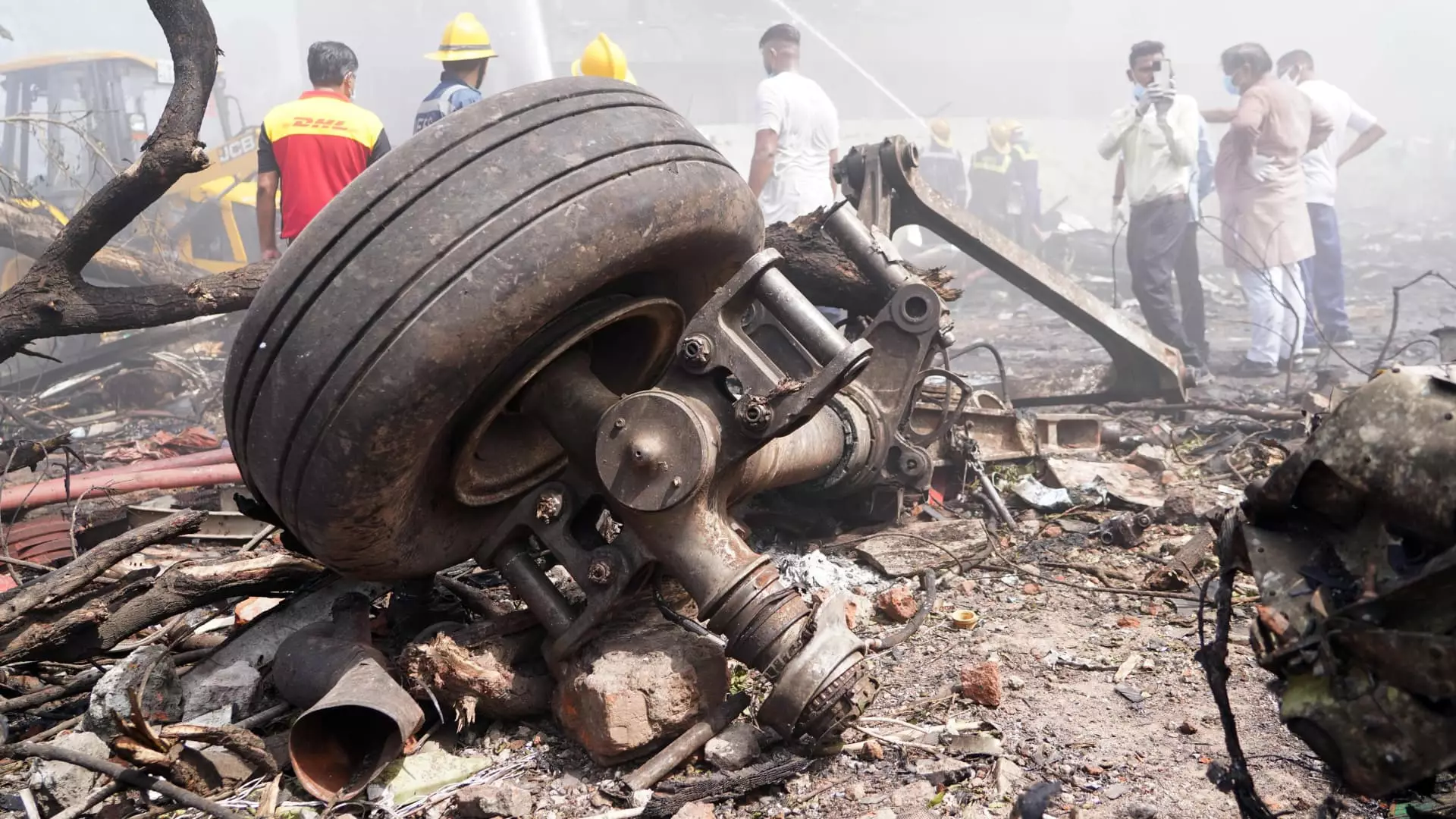In a deeply alarming turn of events, an Air India Boeing 787 Dreamliner, en route to London and carrying 242 individuals, tragically crashed just seconds after taking off from Ahmedabad’s Sardar Vallabhbhai Patel International Airport. The world collectively gasped as news broke of this catastrophe—the first crash of a Boeing 787, marking it as one of the deadliest aviation incidents in recent years. Only a single survivor emerged from the wreckage, a horrifying statistic that necessitates reflection on broader aviation safety protocols and standards.
The aviation industry, a cornerstone of global connection, is steeped in history and technological accomplishments. However, this incident forces a reckoning. Fundamental questions loom large: how can we reconcile the promise of modern aircraft with such devastating failures? This tragedy transcends mere statistics and prompts a critical examination of the safety measures in place across airlines and manufacturers.
Unraveling the Causes
While early investigations into the crash are still underway, various factors could potentially be at play, ranging from mechanical malfunctions to pilot error or environmental concerns. This incident serves as a cruel reminder that the complexity of air travel entails a myriad of risks—even one of the most advanced aircraft in the world is not immune to failure.
The Boeing 787, celebrated for its modernity and efficiency, was lost at an altitude of only 625 feet, a shocking fact that highlights serious deficiencies in either the aircraft’s performance or the operational measures at play. Preliminary data from Flightradar24 show an abrupt signal loss within a minute of takeoff, raising immediate concerns about procedural adherence and technological integrity.
This is where the industry must take a hard look at its commitment to stringent safety regulations. While crash investigations can take time, the rapid emergence of data does not slow the heartbeat of concern. Every minute detail—from pilot training to aircraft maintenance—will be scrutinized. Aviation safety cannot simply rely on brilliant engineering; it also requires unyielding adherence to protocols that prioritize human life over financial gain.
Boeing’s Burden
Boeing, a titan of the aerospace industry, is once again confronted with uncertainty regarding the safety of its products. Even though experts suggest that manufacturing defects in older models might be less likely, history has shown us that lapses in quality control can have dire consequences. The airplane manufacturer has previously faced serious scrutiny, notably during earlier crises involving the 737 Max. This recurrent theme of negligence raises a troubling question about the industry’s prioritization of profit margins over ensuring maximum safety.
Accusations of shortcuts taken in production processes and pressure-laden manufacturing environments add additional weight to the scrutiny over Boeing. As reports claim that the pressure on assembly lines could lead to dangerous compromises, one has to wonder: will this latest tragedy be a wake-up call for the aviation giant, or merely another incident that fades from public consciousness as time marches on?
The Human Toll
Amidst the technical jargon and investigatory processes lies a stark truth: human beings are at the center of this ordeal. The 242 passengers and crew who boarded that ill-fated flight had dreams, commitments, and loved ones waiting for them. Each number in the tragic death toll represents a unique story cut short and a vivid reminder of why safety is paramount in the airline industry.
The impact of this crash ripples beyond the immediate victims and their families. Communities, nations, and the world of aviation will feel the repercussions as they navigate questions of accountability and safety. When tragedies such as this emerge, it forces us to confront the shared responsibility of ensuring accountability at all levels—be it governmental regulations, corporate accountability, or adherence to aviation standards.
A Call for Change
The tragic loss of life in this crash demands a proactive response from both regulatory bodies and aviation manufacturers alike. We are at a crossroads where a collective commitment to overhaul safety standards and operational practices can no longer afford to be a mere aspiration; it must become a concrete action plan.
We must prioritize people over profit, ensuring that all layers of the aviation industry commit to a culture of safety. Only then can we hope to honor the memories of those lost in disasters like this one and work toward a future where air travel is unparalleled not just in efficiency but also in safety. The tragic crash of Air India reminds us that the skies remain perilous, and it is our duty to ensure they are safe for every traveler.

